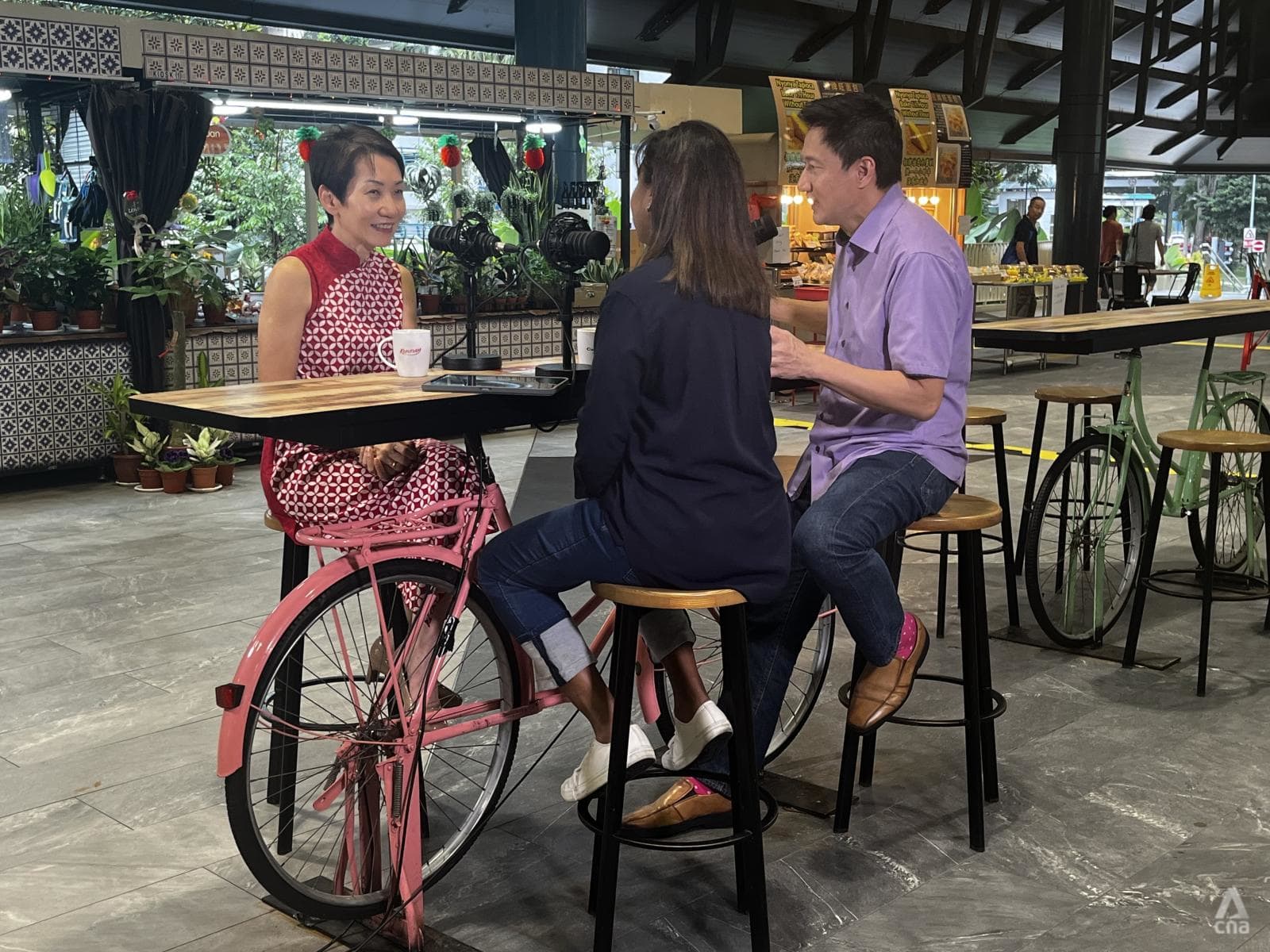Deep Dive Podcast: Singapore's hawker culture can thrive but we need to embrace that it is evolving, says Grace Fu
If you see mala and bubble tea stalls alongside bak chor mee and nasi lemak, it just shows how Singapore's hawker culture is a living, evolving thing, says Sustainability and Environment Minister Grace Fu .
.jpg?itok=HLI2xFsk)
CNA's weekly news podcast takes a deep dive into issues that people talk about at dining tables and along the office corridors. Hosted by Steven Chia and Crispina Robert.

Here's an excerpt from the conversation:
Crispina Robert, host:
We always miss it when our favourite hawker gives up and he says, "Look, I'm too old, my kids are not going to take after me."
Steven Chia, host:
I've lost a few hokkien mee stalls already.
Crispina:
It's very sad. So aside from the infrastructure, this is the challenge, right?
Grace Fu, Minister for Sustainability and Environment:
So that tells us a few things. That the livelihood of hawkers is actually not what our young people would aspire to have, because (for) our parents or grandparents ... that's the only thing that they know of, but their children, their grandchildren are probably well-educated, and there's actually better livelihoods besides being a hawker.
Secondly, we need to think about how to really treat our hawkers better. Is there a way for us to share a bit more with the food costs?
I always think that if you're prepared to pay S$18 or S$20 for a pasta, why are you not prepared to pay S$5 for wonton mee? So sometimes we expect too much from our hawkers as well. Our hawkers find it's difficult to adjust their prices.
So there are three parties that need to come (together) and have some social compact. What is the role of the patron? What's the role of the government in providing facilities like this, and what's the role of a hawker in providing affordable, tasty, delicious food. I think this has to come to equilibrium that's acceptable to all three parties.
Crispina:
Yeah, but we always have this mentality that hawker food always has to be affordable.
Steven:
But what do you mean by affordable? Because with inflation, things get more expensive each year. But your S$3.50 bowl of noodles, it still exists today ... which to me, doesn't make sense.
Minister Fu:
(Hawkers) actually don't raise their prices often. They don't raise it every year. Their costs have gone up. So sometimes, I think in the last one, two years, we do see them adjusting. But hey, have they been adjusting throughout all the years, or have they made adjustments once every five years, or once every 10 years?
Find more episodes of Deep Dive here.
A new episode of Deep Dive drops every Friday. Follow the podcast on Apple or Spotify for the latest updates.
Have a great topic for us? Drop the team an email at cnapodcasts [at] mediacorp.com.sg (cnapodcasts[at]mediacorp[dot]com[dot]sg)












